
Cycling Bosnia Herzegovina is an autumn trip you should consider doing yourself.
Tuzla … Zvornik – Sarajevo – Jajce – Jablanica – Mostar – Medjugorje – Počitelj – Zabala – Ivanica (Bosnia & Herzegovina) – Dubrovnik airport (Croatia)
650 km cycled

With two weeks at our disposal and a desire to check out another part of the Balkans, we opted for Bosnia and Herzegovina. The decision was influenced by our good friends Zorica and Cviko, who often rave about the beautiful countryside in their homeland and the great place it would be for retirement. This is becoming a recurring theme! They even gifted Kurt Wizz Air vouchers for his 60th birthday… so we had no excuses!
To come up with an itinerary wasn’t as straightforward as in other cases. Of course, most have heard of Sarajevo and Mostar and a few of a more pious inclination will have been to Medjugorie, but the rest is one big blank tourist-free area. So we got ourselves a local travel guide with a lot of pictures and went from there. The brutal war of the 1990s, as the former Socialist Federal Republic of Yugoslavia disintegrated, was certainly going to be a theme on this trip.


A bike-ferry-bike combination saw us to Friedrichshafen on the other side of Lake Constance in Germany, from where we flew with Wizz Air to Tuzla. There, Zorica, Cviko and Petar (their son) took us under their wing in true local hospitality and transported us to their holiday house near the airport. Next morning after a big traditional breakfast we were given the grand tour of Tuzla, where Zorica went to school and then of the former village where Cviko grew up. This was one of many that disappeared during the war. It was like jumping in at the deep end with life guards spinning safety nets of stories to help with the orientation through this horrific chapter of local history.




Later in the evening we moved on to Zvornik, a town on the River Drina, which forms the border with Serbia. The tour here along the river and up to the castle retraced the key sights from Zorica and Cviko’s short courtship in the 1990s. Now, there’s a couple who knew what they wanted… and neither time nor war was going to get in their way! It was wonderful to get a taste of their life before they settled in Switzerland, and needless to say, we enjoyed fabulous home-cooked meals, homemade plum rakija (local brandy) and the full Bosnian coffee ritual.


Then it was time to say good bye and go to see for ourselves. Our route took us along the River Drina for a while and then up a side valley to the Romanija mountains to a pass of 1200m. Blue skies, green fields and autumn colours made for a splendid background, while our band of tarmac led us gently towards Sarajevo. Not surprisingly, the last stretch through a gorge was a lot less tranquil, but still easily survivable!



Sarajevo is certainly where the east meets the west and there is a clear border between the bazaar and High Street on the pedestrianised Ferhadija Street. Gorgeous buildings from Ottoman and Austro-Hungarian times line the streets and the Miljacka River, while markets complete the picture in the old town. Much of the city was only recently restored to its former glory.


Originally an Ottoman stronghold and a caravanserai (the serai being the origin of Saraj-evo), Sarajevo lost some of its importance when Asian goods were diverted to the sea route around Africa. When Bosnia and Herzegovina was handed over to the Austro-Hungarian Empire in 1878, a few imposing representative buildings were constructed, as well as an electrified tram, which happened to be the first in Europe.


However, it was the assassination of Crown Prince Franz Ferdinand in 1914, triggering WW I, which put Sarajevo into the headlines. After that it held a low profile until it hosted the Olympic Winter Games in 1984 and a decade later when the city endured a siege of 1425 days.

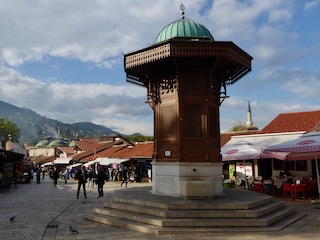

Most people in Bosnia descend from Slavs that moved into the region in the 6th and 7th century. They were on a shifting border between the Eastern and Western Roman Empire, turning to Orthodox (Serbs) and Catholicism (Croats) respectively. With the advent of the Ottoman empire some converted to Islam (Bosniaks). Nevertheless, for centuries the three ethnic groups intermarried (30% in Yugoslav times), despite the fact that they fought on different sides in the wars and raids that often ravaged the land.
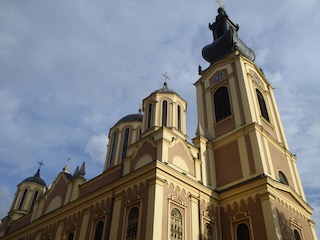


The people we spoke to were all proud of their city and didn’t make any distinctions between Eastern and Western Bosnians. After all, the whole city was bombed by Serbian forces for an incredible four years, while the rest of Europe seemed to look the other way. Numerous museums exhibit more than enough pictorial and video coverage of this sad time to question how such atrocities could be allowed to happen in this day and age.
Bullets and shells have left their mark on facades and pavements as a constant reminder of this horrific time. Many of the explosions resulted in rose-shaped scars, which have been painted red as a memorial to those that were lost and are known as Sarajevo Roses.


Our way out led us through the modern part of town and the Sniper Alley district, which was the front line during the siege. There, many damaged high-rise-building facades left no doubt in our minds as to the ferocious war Sarajevo’s innocent residents had to endure.


On the other side of the airport, the Tunnel of Hope is a horizontal shaft dug under the runway in 1993 as a lifeline to Bosnian controlled territory. A bit claustrophobic even in the few remaining manicured meters, it was where people, medicine, weapons and food entered and left the city during the siege. Prone to flooding and lacking ventilation, a trek through this 800m long tunnel during the war was a horrendous ordeal.


After a few intense war-themed days, it was high time to get our thoughts and bikes onto a different track. The R442 led us out of suburbia into a valley with smaller towns complete with small town industry. It only got busy once we were on the E661 around Travnik, where we took a detour into Jajce.


The views were great but the going got tough at one stage when we hit a mudslide. And even in this remote area, deserted houses with bullet marks were a constant reminder of the past.


Jajce is another town with a castle, but here the waterfall in the city is the real attraction. There’s a read Maid-of-the-Mist experience on the lower viewing platform.


The two-and-a-half days from here to Mostar were stunningly beautiful on good roads (E661 and M16.2) with hardly any traffic until about 20km before Mostar. Following the Vrbas River, the surrounding hills were boasting the best of autumn glory, while an occasional village or cabbage patch broke the optical routine. Pure bliss!





Mostar is famous for its 16th century Ottoman bridge, which was rebuilt after the war and reopened by Prince Charles in 2004. Today it’s a magnet for busloads of daytrippers from Dubrovnik and, for that reason, was a bit of a shock to the system.

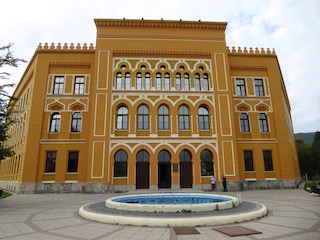

This is in the heart of Herzegovina, where mainly Bosniaks (Muslims) and Croats (Catholics) settled. Together they defended the town against Serbian attacks but then turned against each other. Needless to say, the resulting scars in buildings and psyches are harder to heal if neighbourhood trust has been betrayed so blatantly.




Medjugorje was our next port of call. This has been a place of pilgrimage since the Blessed Virgin Mary appeared to four teenage girls there in 1981. She still appears regularly giving messages to the world, on the 2nd and 25th of each month. If you are in the area, set your apparition alarm so you won’t miss out. Actually, because the place was so full of Irish accents, Darina was convinced she’d taken a wrong turn in Charlestown and ended up in Knock!


After a swim at the Kravice waterfalls and an explore of Počitelj, a former stronghold on the Neretva river, we headed out on the Ciro.

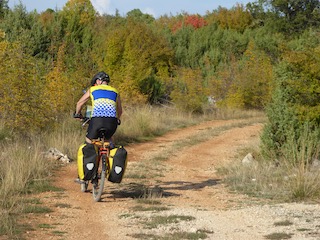

The Ciro, a converted old narrow gauge railway track that led from Mostar to Montenegro via Dubrovnik just opened as a cycle route in 2017. Most of it was pleasant, but a bridge that you cross at your own risk and a stretch of deep gravel are proof that not every district has grasped the benefits of tourism.


Still, the landscape was fantastic in an almost ascetic way. Barren limestone mountains, grazing and tillage were interspersed with deserted villages. Many locals moved to Dubrovnik in search of work when the train line was discontinued and then later during the war others moved while they could.


Theo, a descendant of one of these migrants, purchased the abandoned train station in Zavala a number of years ago with the plan of bringing some life back to this village of five (in the 1991 census it had 129 inhabitants). Now he has a great restaurant, four apartments for rent and a bicycle-wash area, complete with tools for repairs! Well, we can assure you that Theo is a super bike-friendly host besides being a gifted Rakija and wine producer. He is a born storyteller and his career spans everything from engineer to teacher to the man in charge of all the lighthouses in the greater Dubrovnik area! If you find yourself on the Ciro, be sure to stop by. And he appears more than twice a month 😉

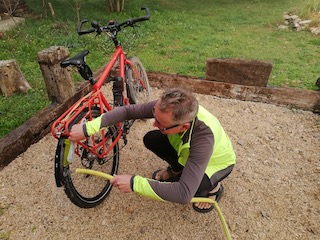
A 100 meters away, the Vjetrenica Cave is the largest one in Bosnia and Herzegovina, with about 7km of known channels. It’s worth a visit and an hour of your time to explore it.



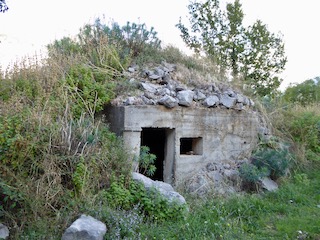
A few more hours of pleasant cycling with warnings of mines left and right of the small road took us to the border with Croatia. There, we converted our last Konvertible Marks into lunch and then rolled down to the sea for a day of rest and relaxation before flying back from Dubrovnik airport.


Bosnia and Herzegovina has to receive top marks for its beautiful landscape (pity about the rubbish) and very friendly and helpful locals. Traffic is a bit erratic at times but not threatening. We only had two stretches that were too busy to be pleasant.



Accommodation was plentiful and a double room en-suite in a motel or guesthouse cost between 60 and 100KM (30-50€). Breakfast was sometimes included in the price. Main courses ranged from 7 to 20KM (3.50-10€) and we didn’t skimp.
Food came in huge cyclist portions and we generally managed to polish the lot off! Breakfast was often pita/burek (filo pastry stuffed with cheese, spinach or minced meat) and yoghurt. Lunch was generally a picnic of local cheeses or cold cuts with flat pita bread. Meat featured frequently on the dinner menu with cevapi (minced mutton/beef meat sausage), mixed grill, gulash and dolma (peppers, eggplants or courgettes stuffed with rice/minced meat). Trout was also readily available, as were salads and soups. Desserts were a serious sugar fix with baklava (filo pastry with nuts and honey), tufahija (boiled apple with walnuts and cream) and ustipci (fried dough with honey filling).

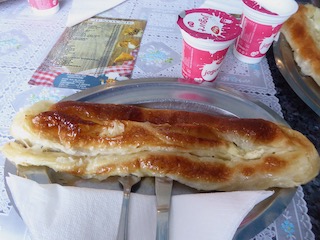







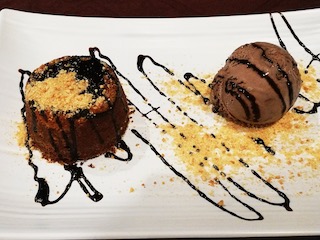


Now, the obvious. How can a war be explained, especially considering the fact that it was between neighbours and family. When Croatia broke away from Serb-dominated Yugoslavia, Bosnia found itself between hammer and anvil with Serbia and Croatia trying to protect their people across the border, forcing a lot of Bosnians to choose sides. After three and a half years of brutal war the west finally managed to convince the leaders of Serbia, Croatia and Bosnia to come together in Dayton, USA to negotiate peace or at least “unwar”. The resulting Dayton Agreement in 1995 fulfilled that aim, and divided the country into two main areas: the Federation of Bosnia and Herzegovina and the Republika Srpska.


It also created a huge administration system governed by three presidents (one from each ethnic group) and dozens of ministers. This constellation, while ensuring peace, is crippling the country economically and so blocking further development. Unemployment is hovering around the 20% mark, and the legacy of the war is reflected in the school system in that it is not the norm that the three ethnic groups are educated together. There are even three distinct history curriculums, and it’s anyone’s guess how they differ.
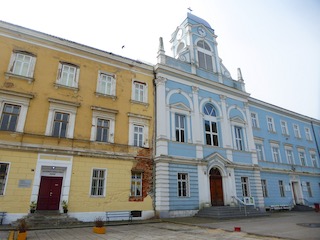

Perhaps it really is time for a Dayton Agreement 2.0 where the three groups come together again, not to negotiate peace, but to create a shared vision for the future. A future that Bosniaks, Croats and Serbs can strive towards and be proud to say they are from Bosnia & Herzegovina, without feeling the need to clarify their ethnicity. This might also help to dim the differences created by this ferocious war and allow all three ethnic groups to live in harmony once more.
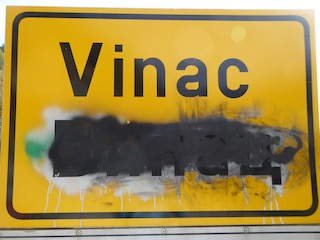

Considering the horror that the nation has recently endured, we found all Bosnia and Herzegovinians to be genuinely welcoming and not just because tourism might lend a much needed air of normality to their amazing country. So, if you are into more than package holidays (probably the case as you’re reading this update), give it a go, and you’ll be truly rewarded.


